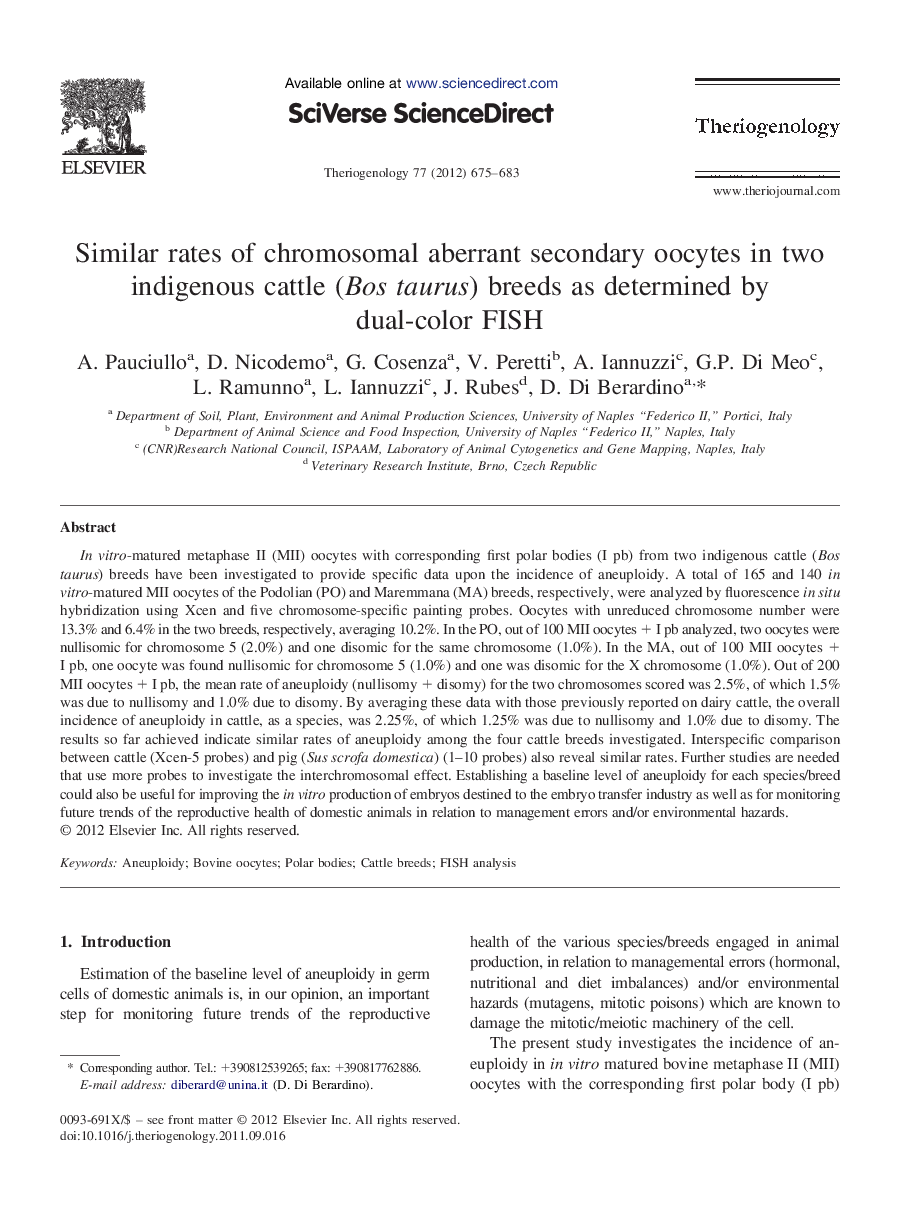| کد مقاله | کد نشریه | سال انتشار | مقاله انگلیسی | نسخه تمام متن |
|---|---|---|---|---|
| 2097739 | 1082495 | 2012 | 9 صفحه PDF | دانلود رایگان |

In vitro-matured metaphase II (MII) oocytes with corresponding first polar bodies (I pb) from two indigenous cattle (Bos taurus) breeds have been investigated to provide specific data upon the incidence of aneuploidy. A total of 165 and 140 in vitro-matured MII oocytes of the Podolian (PO) and Maremmana (MA) breeds, respectively, were analyzed by fluorescence in situ hybridization using Xcen and five chromosome-specific painting probes. Oocytes with unreduced chromosome number were 13.3% and 6.4% in the two breeds, respectively, averaging 10.2%. In the PO, out of 100 MII oocytes + I pb analyzed, two oocytes were nullisomic for chromosome 5 (2.0%) and one disomic for the same chromosome (1.0%). In the MA, out of 100 MII oocytes + I pb, one oocyte was found nullisomic for chromosome 5 (1.0%) and one was disomic for the X chromosome (1.0%). Out of 200 MII oocytes + I pb, the mean rate of aneuploidy (nullisomy + disomy) for the two chromosomes scored was 2.5%, of which 1.5% was due to nullisomy and 1.0% due to disomy. By averaging these data with those previously reported on dairy cattle, the overall incidence of aneuploidy in cattle, as a species, was 2.25%, of which 1.25% was due to nullisomy and 1.0% due to disomy. The results so far achieved indicate similar rates of aneuploidy among the four cattle breeds investigated. Interspecific comparison between cattle (Xcen-5 probes) and pig (Sus scrofa domestica) (1–10 probes) also reveal similar rates. Further studies are needed that use more probes to investigate the interchromosomal effect. Establishing a baseline level of aneuploidy for each species/breed could also be useful for improving the in vitro production of embryos destined to the embryo transfer industry as well as for monitoring future trends of the reproductive health of domestic animals in relation to management errors and/or environmental hazards.
Journal: Theriogenology - Volume 77, Issue 3, February 2012, Pages 675–683